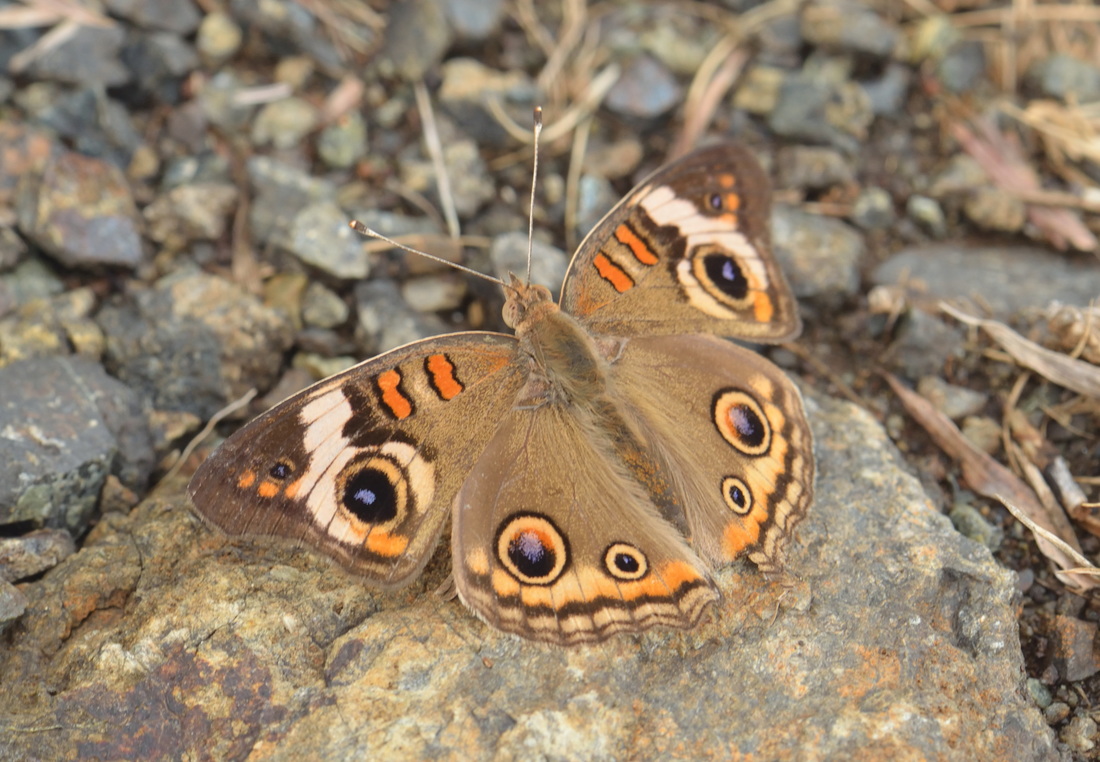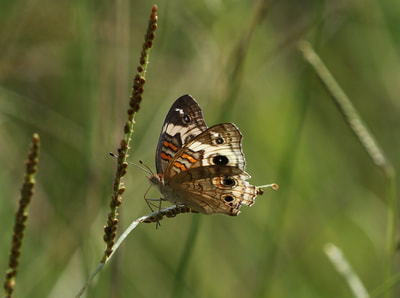Nymphalidae : Nymphalinae
Junonia coenia Hübner, 1822
Common Buckeye
Junonia coenia Hübner, 1822
Common Buckeye
Description and Similar Species: Wingspan 44-56mm. Sexes similar. The three species of Junonia are quite similar and there has been (and still is) considerable confusion due to the different criteria given in different publications and websites of the distinguishing features. Melanie Lalonde (University of Manitoba) has however recently clarified the taxonomy of the Junonia species in North America in her MSc thesis (Lalonde, M. M. L. 2016) using molecular and morphological data. Tropical Buckeye has been reassigned as Junonia zonalis, and Mangrove Buckeye has been reassigned as Junonia neildi.
In Cuba distinguishing the three Junonia species is actually quite simple. Common Buckeye J. coenia is easily identified by having the forewing eyespot bordered by creamy white on both sides. In the much commoner Tropical Buckeye J. zonalis the inner margin of this eyespot is a narrow orange band. On the hindwing the the anterior eyespot is large with a red, blue and black centre.
Range: Southern Mexico, the Antilles and southern North America from where it is a northerly migrant in spring reach as far north as southern Canada.
Status: In Cuba it is rare.
Nectar Plants: Tournefortia and Lantana.
Larval Foodplants: Tabebuia trachycarpa in Cuba but on the mainland it is known to breed on a wide variety of plants.
In Cuba distinguishing the three Junonia species is actually quite simple. Common Buckeye J. coenia is easily identified by having the forewing eyespot bordered by creamy white on both sides. In the much commoner Tropical Buckeye J. zonalis the inner margin of this eyespot is a narrow orange band. On the hindwing the the anterior eyespot is large with a red, blue and black centre.
Range: Southern Mexico, the Antilles and southern North America from where it is a northerly migrant in spring reach as far north as southern Canada.
Status: In Cuba it is rare.
Nectar Plants: Tournefortia and Lantana.
Larval Foodplants: Tabebuia trachycarpa in Cuba but on the mainland it is known to breed on a wide variety of plants.
Larva
Foodplants and Habitat











